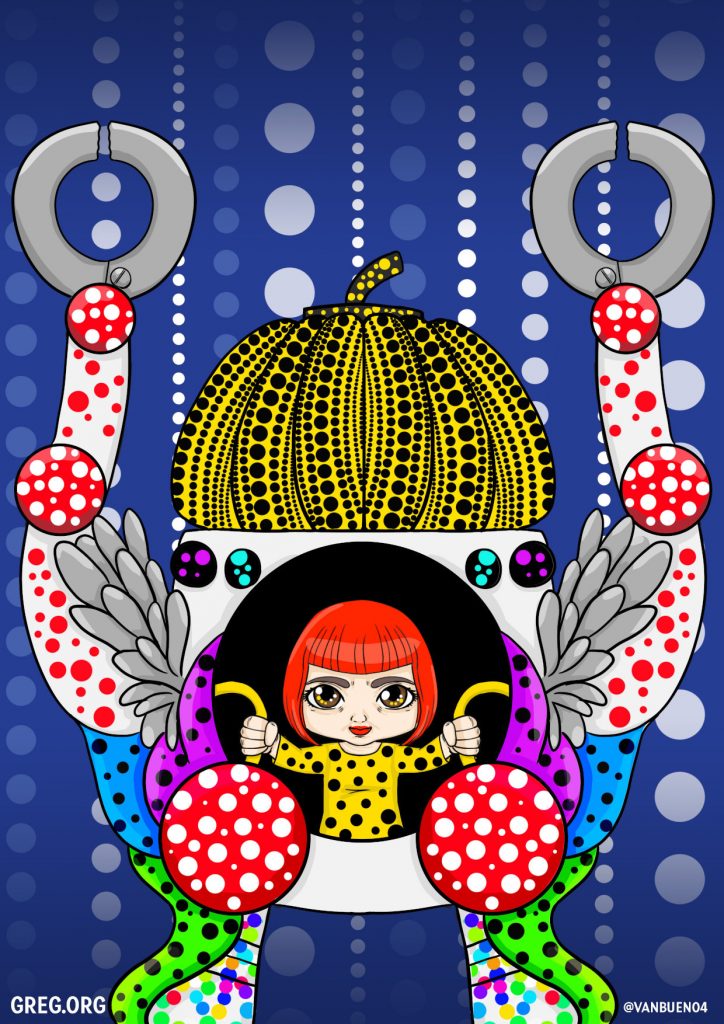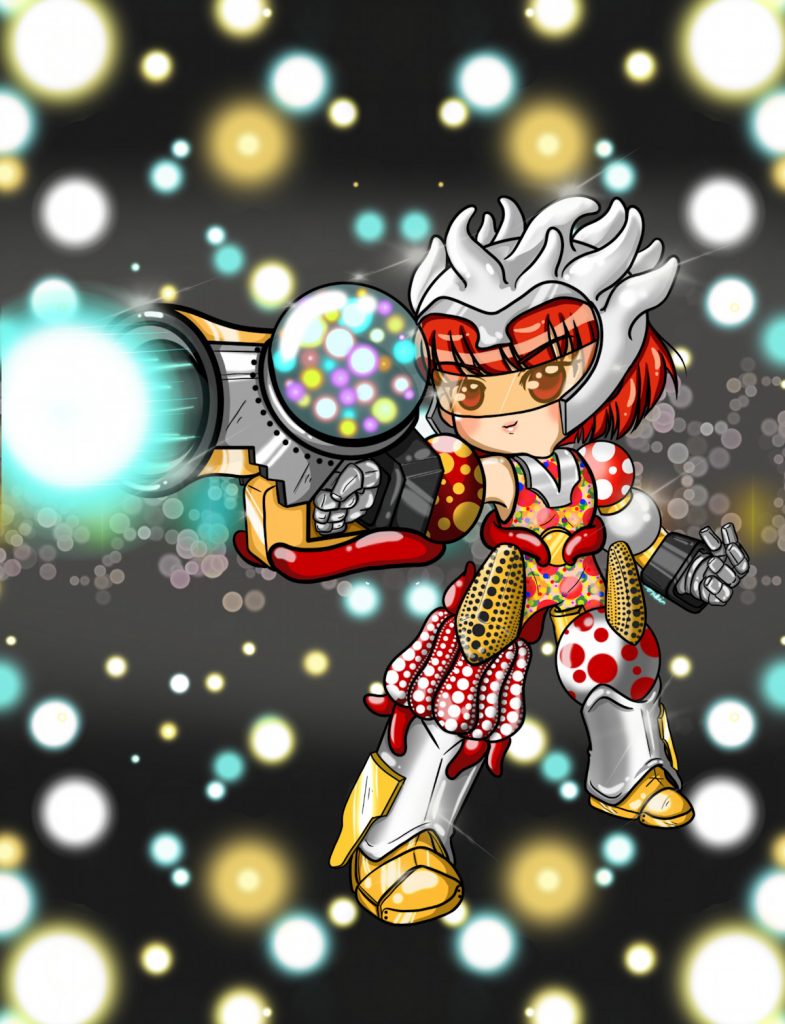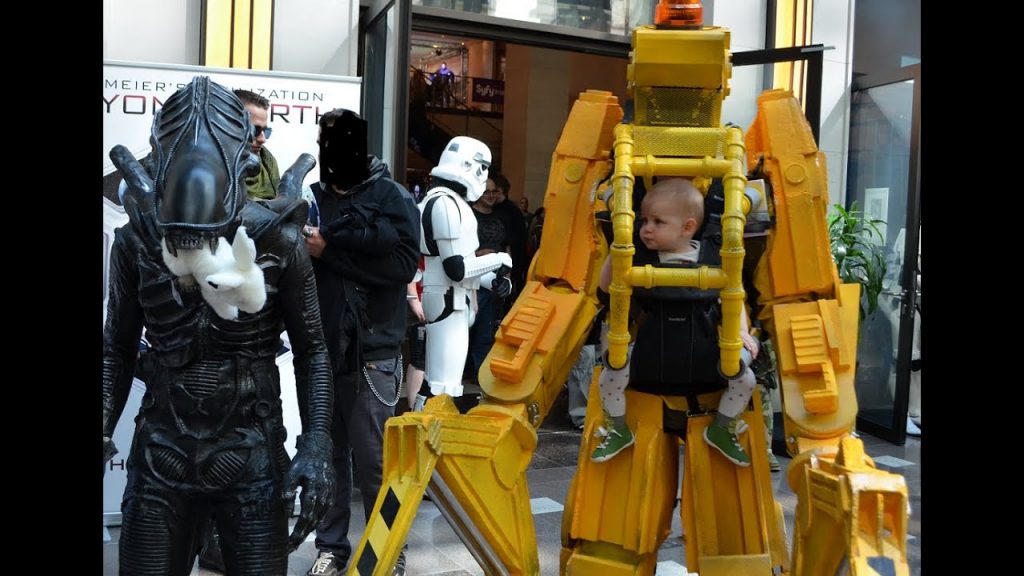
[tl;dr I commissioned two anime artists to depict Yayoi Kusama in a mech-suit to hype the article I just wrote about her. Shout out to vanbueno {above] and onki [below] for their amazing work!]
One of the big questions we set out to answer when writing about Yayoi Kusama for ARTnews was how does the artist keep making so much work, of increasing scale and complexity, well into her 90s? Kusama has always worked at a relentless, obsessive pace; it’s as much a part of her story as of her practice. But her most high-profile work of the last decade especially–Infinity Mirror Rooms, installations, and giant pumpkins–and her many large-scale museum exhibitions, obviously requires an extensive organizational and fabrication infrastructure. How does that work, and who’s really in control of it?

In order to figure this out, during a pandemic, when the artist’s studio had shut down, and her main gallery was non-responsive, and some curators who worked with her were elusive, was not easy. I read almost everything written about Kusama in English and Japanese; I watched every interview I could find, and multiple documentaries made in her studio over the last 15 years. I watched how she worked, and talked, and how the people around her acted in her presence, and in her absence.

To my own surprise, I came away convinced that Kusama herself is very much in control of her artistic practice and her enterprise. She’s at the center of an extensive operation–the Kusama Industrial Complex of the title was an early hypothesis that obviously bore out–but it exists to further and realize her ideas, her intentions, her production. One image I had was of the relationship of the queen of England to the apparatus of state; Kusama’s people all live and work in complete obeisance to her in a bubble with her at the center. But the queen has ultimately sublimated her self to the monarchy; Kusama is beholden only to herself. So this frail, driven, 91-year-old artist wielding all this influence through these structures to make her own vision a reality, while they in turn brace her up, is how I settled on the image of a mech suit:
But it is also the result of a supporting structure that brings together hospital, studio, fabricators, and galleries to surround her like an exoskeleton. Encased within this super-powered mech suit, she produces the artworks, exhibitions, and merch that form the infinitely dazzling Kusama spectacle we see today.
myself

It’s as much Ripley in Aliens or the MCU’s War Machine character as the Jaegers in Pacific Rim, but obviously the concept of human-embedded super robots is an anime archetype. Since her kawaii shift around 2004, Kusama had already created illustrated characters in her work, as well as here own anime-style avatar. [In the Japanese mediascape, it’d be weird if she didn’t.]
I wanted very much to see what a mecha-Kusama looked like, but like walking into Mordor, one does not simply commission an anime illustration. Many anime artists are inspired by particular series or characters, and only take commissions within those anime universes. Artists are often very specific about what commissions they will not take, such as if it involves nudity, fetish, or real people. These practices felt like the surface map of vast cultural swells and histories, and I was wary of blundering in with my clearly out-of-context request.
Eventually I commissioned drawings from two anime artists–@onki_14 and vanbueno–who interpreted the idea of Kusama wielding a mech suit that references the different signature works from her practice in their own styles. I am grateful and psyched to share them here, and I would love to see more interpretations as well. Kusama has always been very deliberate about photographing herself amidst and as a part of her work, and I hope these images resonate with her own.
